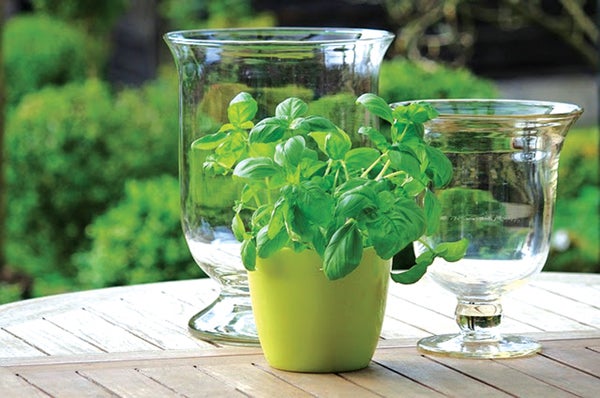How to grow the perfect garden in a small space
Published 12:27 pm Friday, July 10, 2020

- A patio garden can be as simple as planting broccoli in a flower box or lettuce in a container...You can grow your own herbs in containers on your patio.
|
Getting your Trinity Audio player ready...
|
The English poet Alfred Austin once said, “To nurture a garden is to feed not just the body, but the soul.” Seems reasonable, right? Fresh air, sunshine, the sounds of nature, and the feel of soil … and then there’s the sound of car horns, your neighbor’s radio (at least he has good taste in music), and the feel of your concrete patio. City life may not be the first thing that comes to mind when you think of a garden, but you don’t need an idyllic pasture to grow fresh vegetables.
In fact, patio gardens and small garden spaces are popular across the country, from the balconies of New York City to the sunlit kitchen windows of San Diego. All you need is a container, sunshine, soil, and seeds to grow a garden that will fit into even the tiniest of spaces.
Want broccoli? ‘Aspabroc Baby’ broccoli (the original broccolini) produces small, tender broccoli heads atop thin, tender stems. You can fit four plants in a 24-inch-long window box. ‘Pomegranate Crunch’ lettuce is also a perfect container vegetable. This colorful lettuce produces small, dense heads with cherry leaves and light green hearts.
You can even grow cheese in containers. Well, you can grow ‘Hungarian Cheese’ peppers, anyway. These 28-inch-tall plants produce quickly, and the flat, fluted sweet peppers are great for stuffing or eating just like they are. For extra vigor and numerous blooms that set fruit, give them a magnesium boost by scratching 1/4 cup of Epsom salts around each plant once it’s established.
You can also grow peas, blueberries, and celery in a container garden? You can!
The majority of vegetables and herbs grow best in full sun. That means when seeking out the ideal site for a patio vegetable garden, choose a location that receives a minimum of 8 hours of full sun per day. And remember… a patio vegetable garden doesn’t actually have to be on a patio. Feel free to set up the garden on a porch, deck, driveway, parking pad, or patio. Any relatively sunny, level spot will do.
If you don’t have a spot with full sun, don’t fret! You can still have a productive garden; you’ll just have to adjust what you grow. Leafy green vegetables, like lettuce, kale, and chard, and some root crops, like carrots and radish, grow fine with as little as 4 to 6 hours of sun. However, if you’d like to grow heat-loving vegetables like tomatoes, peppers, beans, and squash, you’ll want to choose the sunniest spot possible.
One nice feature of a patio vegetable garden is that you can make it mobile. Use wheeled planters and pot dolliesto move the containers from one side of the patio to the other each day to increase their light exposure. Follow the sun if that’s what’s required for the plants to receive maximum light.
Another feature to be on the lookout for when choosing where to put your patio vegetable garden is a water source. Lugging full watering cans is a job that gets old fast. And you’ll be watering your garden a lot once summer’s heat arrives. If possible, keep the garden close to the spigot so it’s easy to turn on the hose and water your garden every day. Vegetables are thirsty plants, and you’ll be spending a lot of time watering them during summer’s heat (more on watering later in this article). Lastly, when choosing your site, don’t forget to look up. If your home’s eaves extend out over the patio, don’t put your patio vegetable garden right up against the house. Rainfall will never reach the pots if they’re tucked under the eaves. While rain most likely won’t be your primary source of irrigation water during the summer, the occasional heavy downpour does help reduce how often you’ll have to water with the hose.




